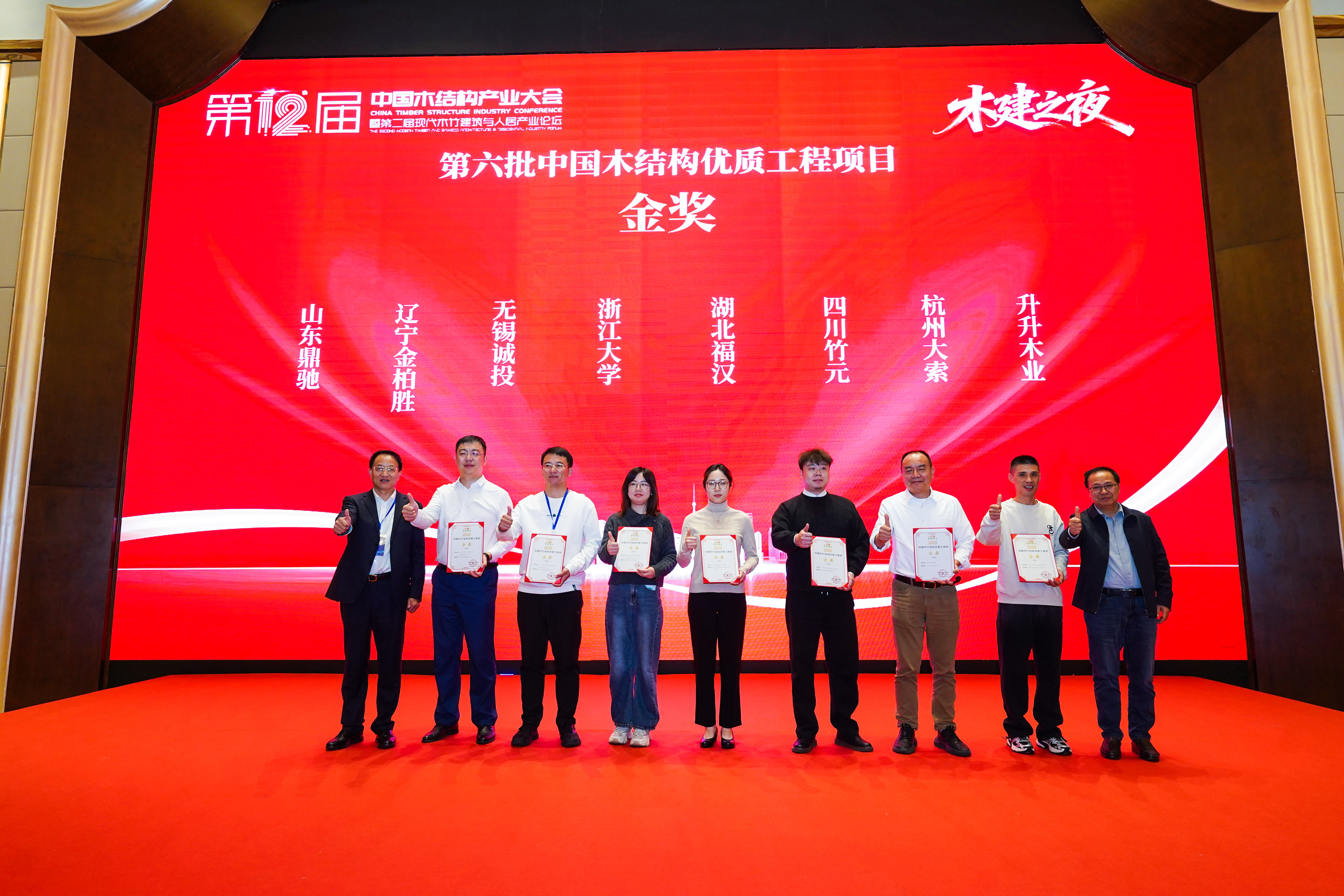On November 20, the "Ninghai Bamboo Tower" project was honored with the prestigious China Wood and Bamboo Structure Premium Project Gold Award during the 12th China Timber Structure Industry Conference and the 2nd Modern Timber and Bamboo Architecture & Residential Industry Forum in Penglai, Shandong, one of China’s highest awards in timber and bamboo construction. The project was designed and constructed by the team led by ZJUI Prof. Xiao Yan, Director of the Zhejiang University (Ninghai) Joint Research Center for Bio-based Materials and Carbon Neutral Development.

▲Wu Ruijia, a member of the team and PhD student at ZJUI (fifth from the left), was present at the award ceremony.
Located in Ninghai County, Ningbo, the "Ninghai Bamboo Tower" is a seven-story mid-rise structure (six standard floors plus a loft) with a total height of 20.3 meters and a floor area spanning approximately 800 square meters. Constructed mainly with composite engineered bamboo structural materials, the project adopts performance-based design, digital-twin fabrication, and modular prefabrication. As the world’s first seven-story building utilizing engineered bamboo, it solidifies its status as the tallest such structure to date while marking a significant milestone for bamboo-based construction. Spearheaded by Prof. Xiao, the project was co-developed in collaboration with Ninghai County Architectural Design Institute and Ningbo Bamduos New Materials Technology Co., Ltd., setting a benchmark for integrated industry-university-research innovation.

▲ the "Ninghai Bamboo Tower"
Having already garnered multiple prestigious international awards, the project has now evolved into a core carrier and key platform for cutting-edge research, including long-term structural monitoring, indoor environmental comfort optimization, and building thermal performance enhancement, continuing to empower research exploration in related fields. In the future, the team will deepen its focus on the modern prefabricated wood-bamboo construction sector, with technological innovation as the core driver. It will propel industrial iteration and upgrading, establishing a new model and benchmark for the high-quality development of the construction industry under the guidance of the "dual carbon" goals.







